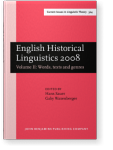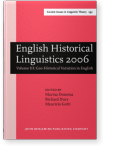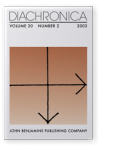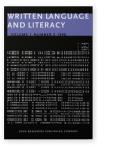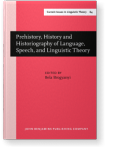William S-Y. Wang
List of John Benjamins publications for which William S-Y. Wang plays a role.
2022 Chapter 3. Ambiguity resolution and the evolution of homophones in English English Historical Linguistics: Change in structure and meaning, Los, Bettelou, Claire Cowie, Patrick Honeybone and Graeme Trousdale (eds.), pp. 61–90 | Chapter
Based on a quantitative study of the evolution of homophones in English, we present an argument about why homophones occur. Zipf’s law, which states that word frequency decreases as a power law of its rank, can be seen as the outcome of form-meaning associations, adopted in order to comply with… read more
2012 The global organization of the English lexicon and its evolution English Historical Linguistics 2008: Selected papers from the fifteenth International Conference on English Historical Linguistics (ICEHL 15), Munich, 24-30 August 2008, Sauer, Hans and Gaby Waxenberger (eds.), pp. 65–84 | Article
We present a quantitative study of the semantic network of the set of nouns and verbs of WordNet, which is a systematic representation of the Present-day English lexicon based on psycholinguistic considerations, and A Thesaurus of Old English to understand the evolution of the global organization… read more
2009 A simulation study on word order bias Interaction Studies 10:1, pp. 51–75 | Article
The majority of the extant languages have one of three dominant basic word orders: SVO, SOV or VSO. Various hypotheses have been proposed to explain this word order bias, including the existence of a universal grammar, the learnability imposed by cognitive constraints, the descent of modern… read more
2008 Dynamic dialectology and social networks English Historical Linguistics 2006: Selected papers from the fourteenth International Conference on English Historical Linguistics (ICEHL 14), Bergamo, 21–25 August 2006, Dossena, Marina, Richard Dury and Maurizio Gotti (eds.), pp. 131–151 | Article
This paper examines how different structures of social networks affect linguistic selection type of change or functionally biased change, and game type of change or socially biased change, based on simulation and historical data from English. We show that the weaker the functional or social bias,… read more
2003 On detecting borrowing: Distance-based and character-based approaches Diachronica 20:2, pp. 289–330 | Article
Two computational methods for detecting borrowing among a family of genetically related languages are proposed. One method, based on the detection of branches with negative length in lexicostatistical trees, is shown to work poorly. As we demonstrate, this method is similar to another recently… read more
1996 Snowball effect in lexical diffusion: The development of -s in the third person singular present indicative in English English Historical Linguistics 1994: Papers from the 8th International Conference on English Historical Linguistics (8 ICEHL, Edinburgh, 19–23 September 1994), Britton, Derek (ed.), pp. 119–142 | Article
1996 Genes, Dates, And The Writing System International Review of Chinese Linguistics 1:1, pp. 45–46 | Article
1992 3. Isoglosses: Artifactual or real? Prehistory, History and Historiography of Language, Speech, and Linguistic Theory: Papers in honor of Oswald Szemerényi I, Brogyanyi, Bela (ed.), pp. 153–182 | Article
1975 13 Vowel Features, Paired Variables, and the English Vowel Shift Essays on the Sound Pattern of English, Goyvaerts, Didier L. and Geoffrey K. Pullum (eds.), pp. 377–394 | Article

